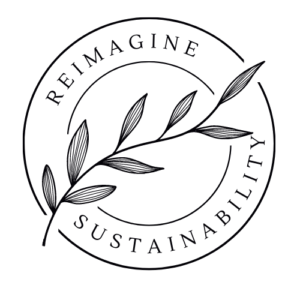When we find something nice, pretty or beautiful we want to preserve it, to save it from any harm so it can continue enriching a place with its beauty. We take care of things which bring us joy and are pleasant to look at. When something pleases our eyes we care more about it because simple things give us pleasure. We are more likely to preserve something which makes us happy than something we find ugly.
Nature, for instance, has in endless situations taken our breath away with its beauty. When was the last time you saw a magnificent sunset? Do you remember being in awe of a colourful flower? When was the last time you appreciated a jump into crystal clear water? My most recent experience with nature which excited me was feeding a Magpie by hand.
Humans always liked pretty things
The appreciation of nature and beauty derives from different kinds of aesthetics. Human history is full of different aesthetic periods which vary enormously from area to area. The three main aesthetics of Western culture are for example Classicism, Baroque, and Romanticism. The Middle Eastern aesthetics differs tremendously to the artistic traditions in South America. South Asian art is different to traditional art in Africa.

Different pattern aesthtics from across the globe**
As you can see from the picture above, aesthetics can take many forms and colours. I would love to write more about it, but I’m not a professional or educated enough to describe the differences in aesthetics appropriately. Nonetheless, I appreciate the diversity we can experience from other cultures.
**If you have culturally more accurate descriptions of the patterns shown in this picture, please let me know. Every well-meant correction is welcome to display the name of the patterns accurately.
The beauty of our diverse histories comes into play. What is considered beautiful in one place doesn’t create the same effect in another. What has happened in the modern world? What has happened is the decline of beauty in public spaces all over the world; by removing natural environments, building concrete deserts or building mono-suburbs with little room for imagination. The diversity in aesthetics is vanishing at the cost of functionality and price.
The purpose of beautiful places
Modern architecture increasingly took away the beauty and imagination of people. Concrete buildings in combination with some glass and steel describe the aesthetics we currently experience. All over the world skyscrapers and concrete blocks replaced traditional architecture, making most cities look the same. Everything became very functional, very plain and very ugly. It is cheap but at what cost? It is not a myth that urban spaces don’t contribute to the well-being of people, let alone nature. The modern urban aesthetic is also increasing rather than solving problems such as poor air and water quality, waste and high energy consumption.
What we know is that it hasn’t always been as ugly as it is now. It’s a bit sad that a lot of resources are wasted to build something unattractive. What if we turned capitalistic-influenced cities into places where we enjoyed spending our time? Well, I guess most of us are not urban planners, but it doesn’t mean that we cannot contribute our ideas to make urban spaces livable again.
Related:
Reimagine Sustainability: Create The Impact You Want To See In Our World
I want to show you what this might look like in two examples. One example is of an underutilised place in my neighbourhood. The other example is from an urban space.
Repurposing neighbourhood areas for more happiness
On my weekly walks or runs, I usually come across this patch of land, which is pretty unexciting. I also don’t know to whom this block of land belongs, but it didn’t stop me from imagining what it could look like with a few adjustments. Sustainably repurposing areas that don’t have any purpose is an easy way to make a place more appealing. Are you curious about what my idea is? Scroll past this boring picture and dive into my world of imagination.

Boring and without purpose
My idea for the underutilised space is to turn it into a community garden, for neighbours to come together and learn how to grow food. There is a primary school nearby, which is an excellent way to introduce kids to the magic of growing your own food. Additionally, the community garden can be used as a point for local gatherings and bring people from the neighbourhood together. From an environmental perspective, growing food can enhance biodiversity, give animals a space to nest and also find food. “Sharing is caring” doesn’t only apply to humans.

Not boring and with a purpose
-
- Garden beds. The area is relatively big and uncultivated so there is plenty of space to set up veggie garden beds. Every patch can have a different theme: food from different continents, a herb garden, seasonal or local plants. The area is very uneven so grapes could grow there quite well. Identifying which plants will grow best in this location can be inspiring for the neighbourhood, and provide a way to turn their gardens into food forests.
- Sharing station. Sharing is an important aspect when it comes to sustainability. This project needs people who are happy to share or donate their tools. Having a communal station allows people to work together and distribute the work between them. This area can also include one or more compost bins to recycle plant scraps and turn them back into soil.
- Fruit trees. Instead of planting trees which don’t produce any food, a few fruit trees can be planted in this area. They not only produce food but also give shade, which is important for the people as well as plants. Thus the sun path throughout the year should be considered to find the best spots for fruit trees.
- Crop fences. Instead of using materials to build fences, consider using crops as natural dividers. This is important for point five to prevent kids from sliding onto the road. Growing plants as fences helps to create natural dividers and produce food at the same time. Animals can also find shelter in the bushes.
- Kids’ playground. Teaching kids how to grow food is an important factor in making them aware of sustainable practices. But their attention span is sometimes too short and that’s why a distraction is needed. Instead of having kids running around or into the veggie gardens, a slide on the far side of the area might be the charm. Sure, it won’t always be enough distraction, but taking children’s playfulness and adventurousness into account is important. Furthermore, this neighbourhood is family centred, so including children’s needs into planning is non negotiable.
- Picnic areas. After all the hard work it’s good to have nice places to rest and enjoy the fruits of your hard labour. Those spots can also serve for social mingling or recreational purposes.
- Privacy. To the right and left of the area are residential houses, to guarantee their privacy, fruit trees can be planted next to the fences. Because it is possible that due to repurposing this part of land, more disturbances such as noises can occur. And we don’t want to upset the neighbours, right?
Doesn’t it look easy to repurpose a piece of land sustainably? Surely, there is a lot more to it, but contributing to the well-being of a community should be taken into account by urban as well as suburban planners. It is a neat exercise for your imagination to repurpose something for the benefit of many. Food is usually the way to go for me. What would it be for you?
Making urban spaces a place where we want to spend time
The next example is an urban space. There is this beautiful building in the middle surrounded by concrete, steel and glass blocks. Not very aesthetically pleasing, right? This time it was a bit more difficult to put life into something that looks dead. It was a fun challenge.


It’s a bit of a change, isn’t it?
-
- Sitting spots. This place needs more spots to relax. A lot of office buildings are nearby, but there are not many shady and comfortable spots to relax and enjoy a coffee. Most of the sitting areas are uncomfortable benches with little shade covering them. Sun protection is also needed as the concrete area heats up a lot. Other materials which are sunproof enhance the look of the place.
- More greenery. What is built cannot be easily changed, but it could do with a little more naturalness. Incorporating plants which withstand heat into urban settings makes the area more pleasing to look at. It is not possible to plant anything on the roofs and facades, but those unused spaces are an opportunity to make a city look greener and friendlier.
- Respect the landowners. For too long native people have been oppressed and neglected by their colonisers. We can’t undo the past, but we can be better now. Giving back the autonomy of native people to be included in urban planning is an important step. In this example, the traditional owners of Brisbane are the Turrbal people. Respecting the millennia-long landowners is crucial for social sustainability.
- Local artists. This brings me to the point of making marginalised people visible, and what could be a more beautiful opportunity than sharing art? Incorporating local artists into urban design reflects the culture of a place as opposed to hiring people who don’t identify strongly with the area. Bringing local diversity to urban spaces gives artists great opportunities to reflect the true culture of a place.
- Rooftop use. Rooftops are underutilised spaces that can be used for lounge and bar areas, growing food or art exhibitions etc. Those spaces also give a different view over the city which can be exciting.
- Wall art. Walls don’t have to remain empty and grey. There are enough awesome artists who can transform a plain concrete wall into something magical. Street Art is a great way for younger generations to express their identity in their city. It also makes cities more colourful, and hunting for graffiti art can become a tourist magnet.
As you can see from my playful approach: Little changes can have a big impact. With little tweaks here and there it is possible to turn underutilised spaces into more sustainable and enjoyable public spaces. Any urban space which doesn’t contribute to the well-being of people and nature needs to be transformed.
Are there any spaces in your area or city which need to undergo a sustainable transformation?



0 Comments